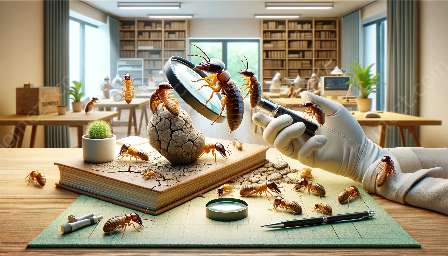Termites can wreak havoc on properties, causing significant damage. In this comprehensive guide, we will explore natural termite control methods and eco-friendly pest control solutions to protect your home or building from termites and other pests.
Understanding Termites and Their Impact
Termites are tiny insects that feed on wood and can cause severe structural damage to buildings. They live in colonies and are often difficult to detect until significant damage has occurred.
Impacts of Termite Infestations:
- Structural Damage: Termites can weaken foundations, walls, and wooden structures, compromising the integrity of the building.
- Financial Loss: Repairing termite damage can be costly, and it may not be covered by insurance.
- Health Concerns: Termite infestations can lead to mold growth, which can pose health risks to occupants.
Natural Termite Control Methods
When dealing with termites, many property owners are hesitant to use chemical pesticides due to their potential impact on the environment and human health. Fortunately, there are several natural termite control methods that can effectively manage termite infestations while minimizing harm to the environment.
1. Boric Acid
Boric acid is a naturally occurring compound that is highly effective against termites. It damages their digestive system and outer exoskeleton, ultimately leading to their demise. To use boric acid for termite control, it can be applied as a powder or mixed with water to create a solution for treating wood and soil.
2. Nematodes
Nematodes are microscopic worms that are natural predators of termites. When introduced into the soil around infested areas, nematodes seek out termites and release bacteria to kill them. This biological control method is safe for the environment and other beneficial insects.
3. Orange Oil
Orange oil contains d-limonene, a compound that has insecticidal properties. When applied to infested wood, orange oil can eliminate termites on contact. It is biodegradable and poses minimal risk to humans and pets.
Eco-Friendly Pest Control Solutions
In addition to specific natural methods for termite control, there are broader eco-friendly pest control solutions that can help prevent and manage termite infestations.
1. Integrated Pest Management (IPM)
IPM is an environmentally sensitive approach to pest control that emphasizes prevention, monitoring, and control. It involves identifying and addressing the root causes of pest problems, reducing the need for chemical pesticides.
2. Habitat Modification
Modifying the surrounding environment of a property can make it less attractive to termites. This can include reducing moisture accumulation, eliminating wood-to-soil contact, and maintaining proper ventilation to discourage termite activity.
3. Education and Awareness
Informing property owners about termite prevention techniques and early signs of infestation can help mitigate the risk of severe termite damage. Proactive measures such as regular inspections and prompt action can prevent infestations from escalating.
Conclusion
Protecting your property from termites and pests is essential for maintaining its value and structural integrity. By leveraging natural termite control methods and embracing eco-friendly pest control solutions, property owners can effectively manage termite infestations while minimizing environmental impact. Taking a proactive approach to pest management can lead to long-term success in safeguarding buildings from termite damage.




















































